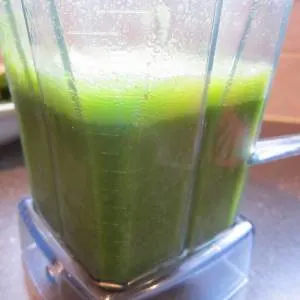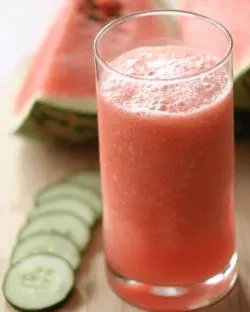 Smoothies are delicious and fun drinks that everyone loves having once in a while. They’re also healthier alternatives to other beverages such as coffee and tea. The thing is, like all other recipes and self-made foods, you won’t get smoothies perfect on the first try. There is bound to be trial and error when you’re making smoothies.
Smoothies are delicious and fun drinks that everyone loves having once in a while. They’re also healthier alternatives to other beverages such as coffee and tea. The thing is, like all other recipes and self-made foods, you won’t get smoothies perfect on the first try. There is bound to be trial and error when you’re making smoothies.
Yet sometimes, people can’t figure out the answer to their dilemma. One of the most common ones is, why is my smoothie foamy?
Whenever you pour your smoothie out into your glass, you’ll see foam developing on top of your drink. Why does this happen exactly? Well, you’re about to find out.
Read More: Best blenders for smoothies with frozen fruit
Why Does Foam Build Up On My Smoothie?
Foam builds up over a smoothie when you have fibers from your fruit or vegetable’s skin still floating around. These fibers are insoluble, which means they don’t dissolve or blend into the rest of the smoothie. Being lighter than your dense drink, they end up floating to the top of the smoothie and sitting there until removed.
Is Foam A Good Sign Or A Bad Sign?
Foam is neither a good nor bad sign, it’s just not a yummy one if you decide to ignore and drink the foam anyway. If so, you’ll realize that the foam is gritty, unpleasant, and tasteless. It does your smoothie no justice nor benefit and is better off removed. It also tends to trail behind all the way to the bottom of your glass, so it ruins the whole experience of your smoothie.
How Do You Get Rid Of Foam?
Fortunately, there are a couple of easy ways in which you can remove the foam from your smoothie. Try all these methods to see which ones are easiest and most efficient for you.
- Before pouring your smoothie into servings, leave the smoothie in the blender for a couple more seconds. If foam starts to develop over the smoothie, blend it at a slow speed for around 10 to 20 seconds more. This should mix the foam with the rest of the smoothie.
- When you’re pouring the smoothie into glasses, you can also use a spatula to keep the foam inside of the blender to separate it properly from the rest of the smoothie. Anything that makes it into your glass can be neatly scooped off the top with a spoon.
- If the foam begins to develop while your smoothie is in your glass, then you can simply stir it down with a spoon to keep it from piling up. If the smoothie is still not sitting and the foam refuses to go away, then you can strain your smoothie with a fine-mesh sieve. This will take out all solid particles and the foam as well since it’s too thick to actually make it through the opening. All you’ll be left with is a silky smooth smoothie.
Read More: How to make a smoothie thicker
Fruits And Vegetables That Don’t Create Foam
There are some fruits and veggies that don’t foam up, even when the skin is left inside of the mixture. This is because the fibers inside of the skin are soluble. They will dissolve and blend into the rest of the smoothie no worries, and not float up to the surface.
Some fruity examples are bananas, mangoes, peaches, and pears. Broccoli and avocados are also examples that you can incorporate into different smoothie recipes. Another technique you can commit to is using just frozen fruits to make your smoothies. These frozen fruits have better solubility, even the fibers from the skin.
However, if you’re keen on using fresh fruit in your smoothies, there are some healthy fats you can mix into your drinks to get smooth and froth-less smoothies. These fats merge the insoluble fibers with the rest of the smoothie, so they don’t separate themselves once the smoothie is done blending. Some healthy fats you can consider are flax or chia seeds, avocado, nut butter, and coconut oil. They will all help your smoothie sit nicely.
Read More: Best single-serve blenders for smoothies
Other Common Issues When Making A Smoothie
 Froth or foam are not the only issues that people face when making smoothies. The truth is a lot can go wrong when making a smoothie and a lot more can be done to make it better. Here are some other common issues that people face as smoothie virgins.
Froth or foam are not the only issues that people face when making smoothies. The truth is a lot can go wrong when making a smoothie and a lot more can be done to make it better. Here are some other common issues that people face as smoothie virgins.
Some people encounter extra watery smoothies, which taste and feel more like juice. To fix this, you can add a thicker liquid such as yogurt, milk, or even nut butter. You also add more fruits and vegetables than you do liquid, so the smoothie comes out thicker and more flavorful. You can also replace normal ice cubes with frozen fruits. This makes for a chillier smoothie without the additional water saturating the taste.
Other people go another direction and find that their smoothie isn’t creamy enough. This doesn’t mean it’s too watery, this could just mean your smoothie came out thick and stiff. Once again, there are things you can add to your smoothies to make them creamier. Nut butter and yogurt will once again make the smoothie creamier. You can also add silken tofu, pureed pumpkin, coconut oil, and oatmeal. If adding these additional ingredients makes it too thick, then add some milk as well.
Other people face the problem of their smoothies being too gritty. This means that not everything inside of the smoothie was properly mixed or blended and so, you’re left with unpleasant textures in your not-so-smooth smoothie. The easiest and most efficient method is to simply strain your smoothie. This gets all the particles out of the smoothie to make it silkier and smoother.
Read More: Can you freeze smoothies?
Why Is My Smoothie Foamy – Final Thoughts
So now that the question of why is my smoothie foamy has been answered, explained, and provided with a solution, you can make smoothies for yourself like a pro. There is no one way to make smoothies, you can try anything, any recipe, any ingredient that works for you and make the most out of it with good tips and tricks.
